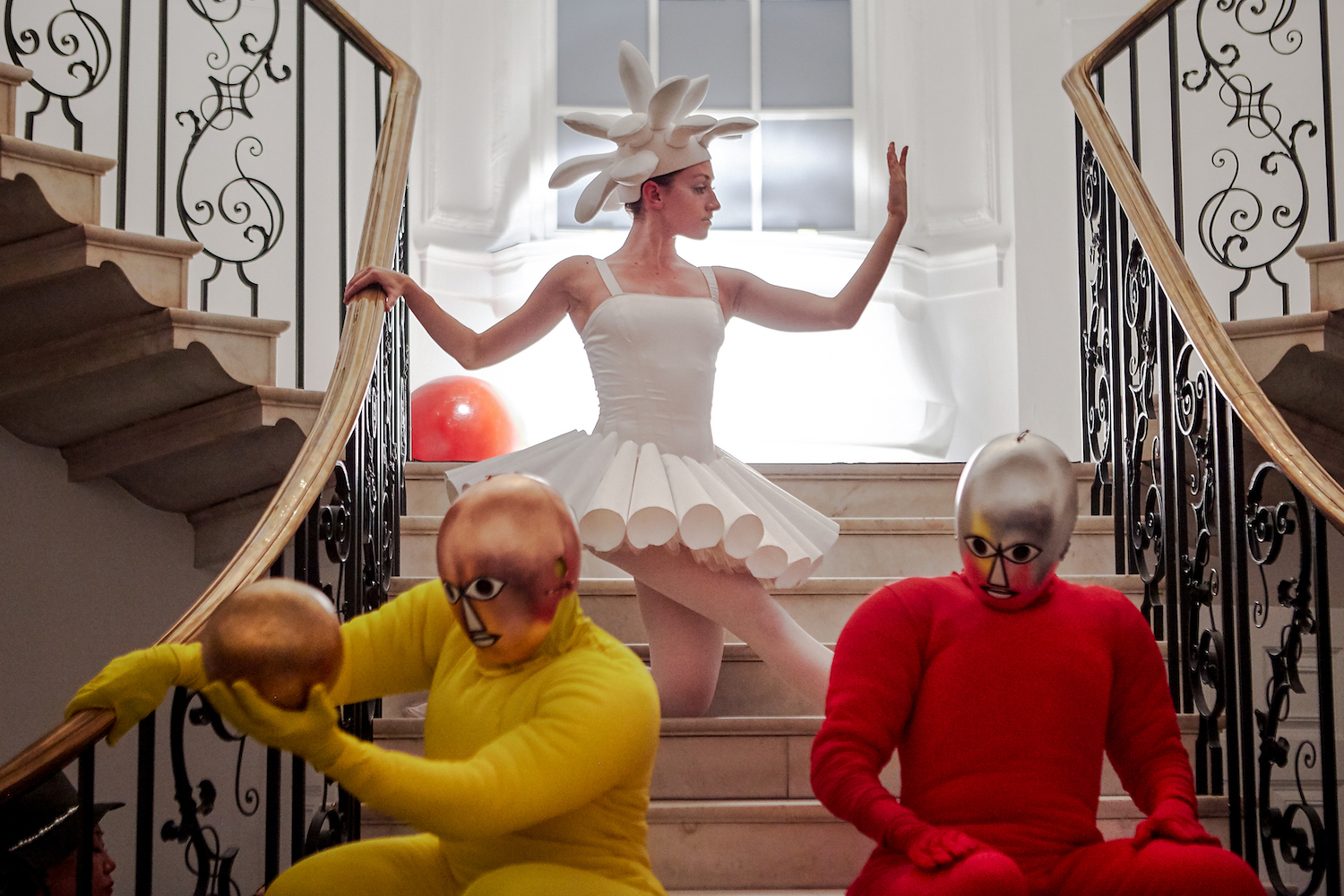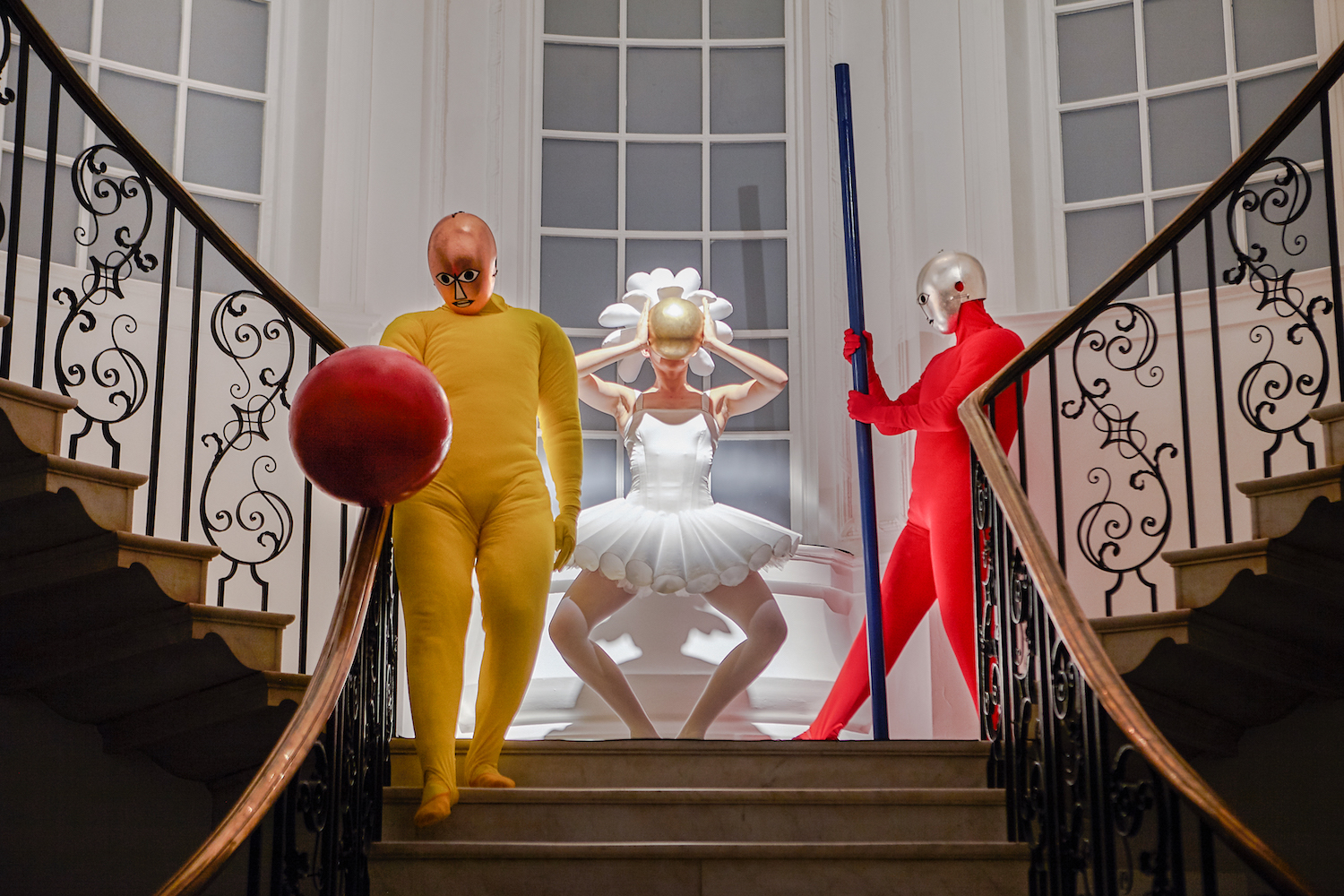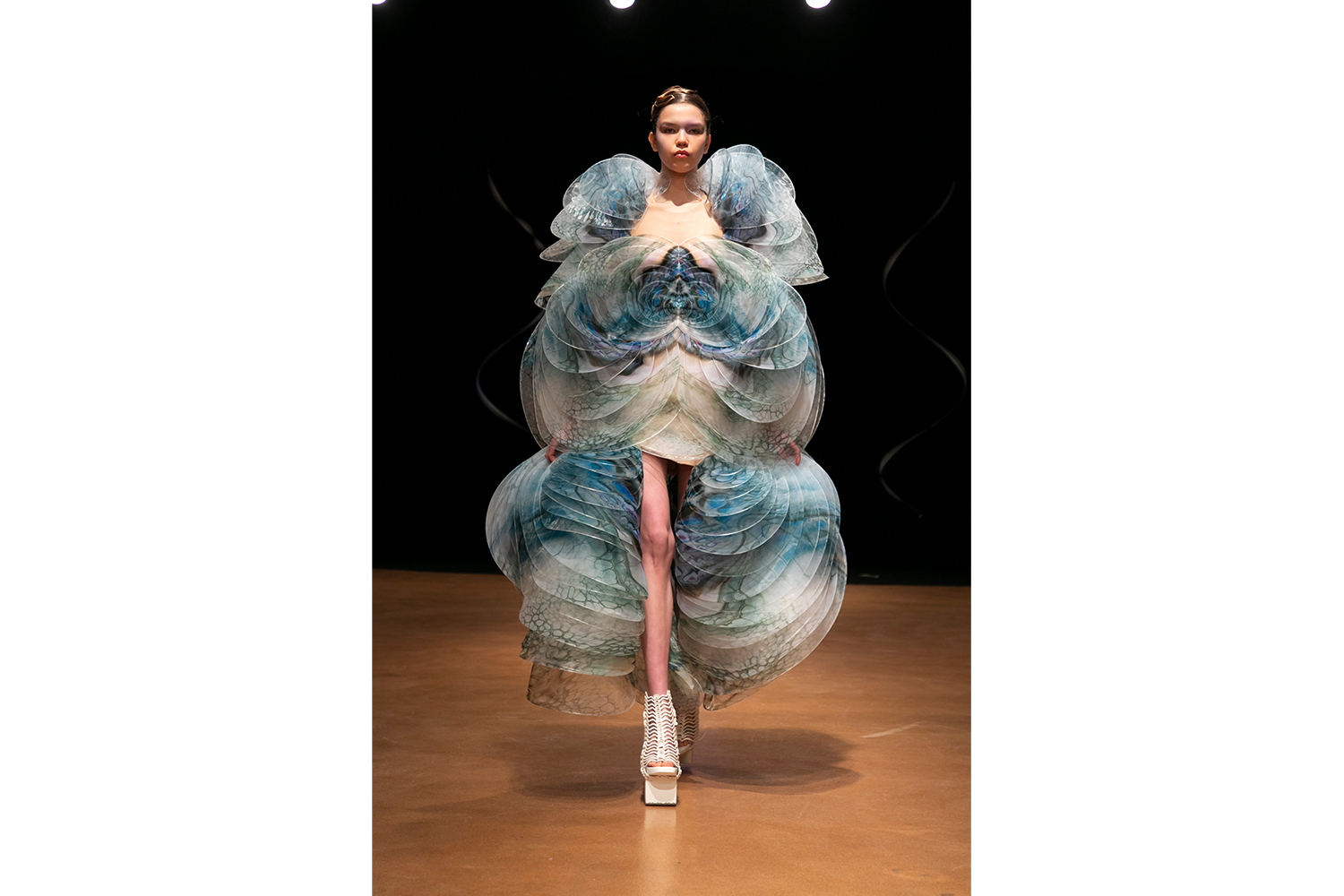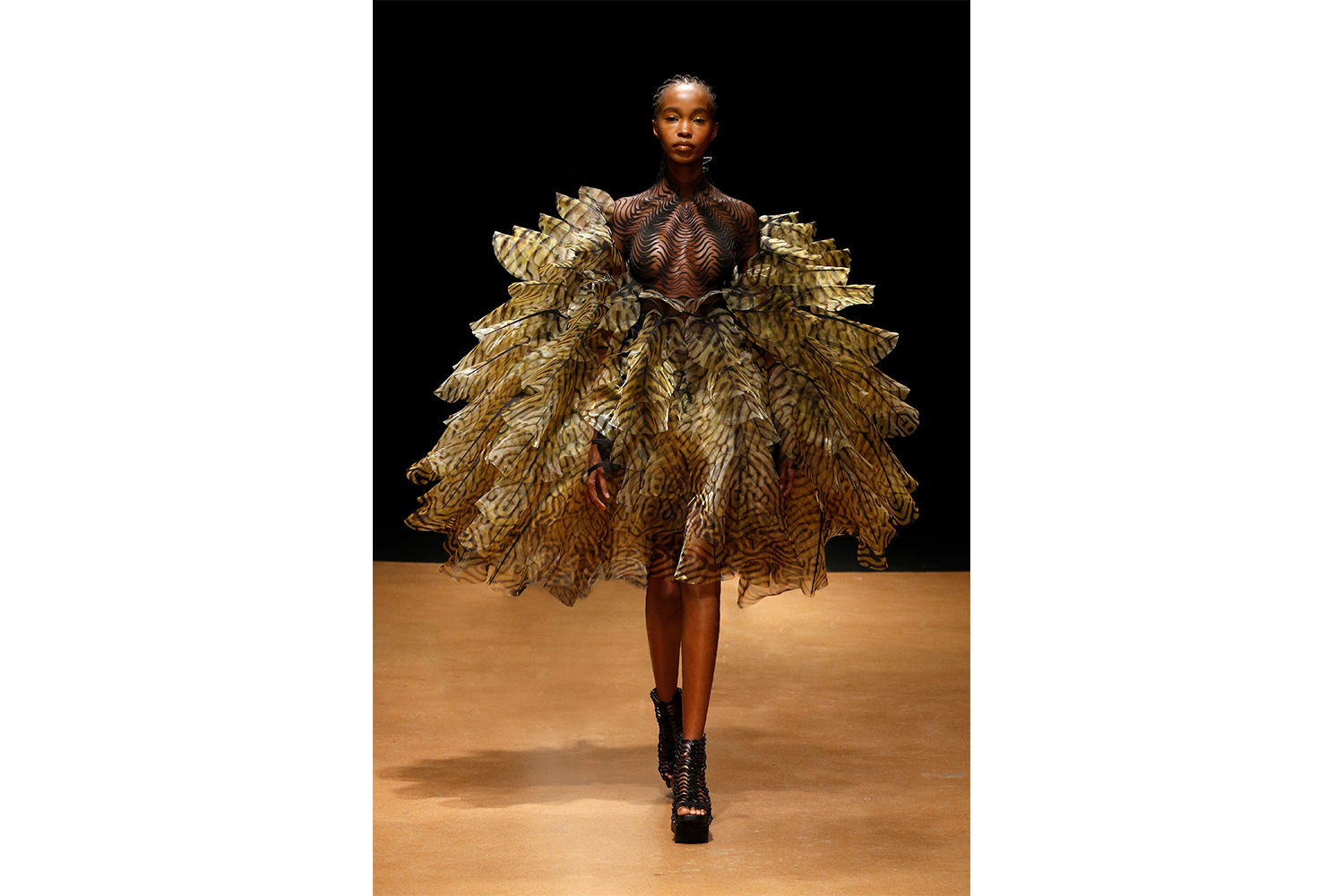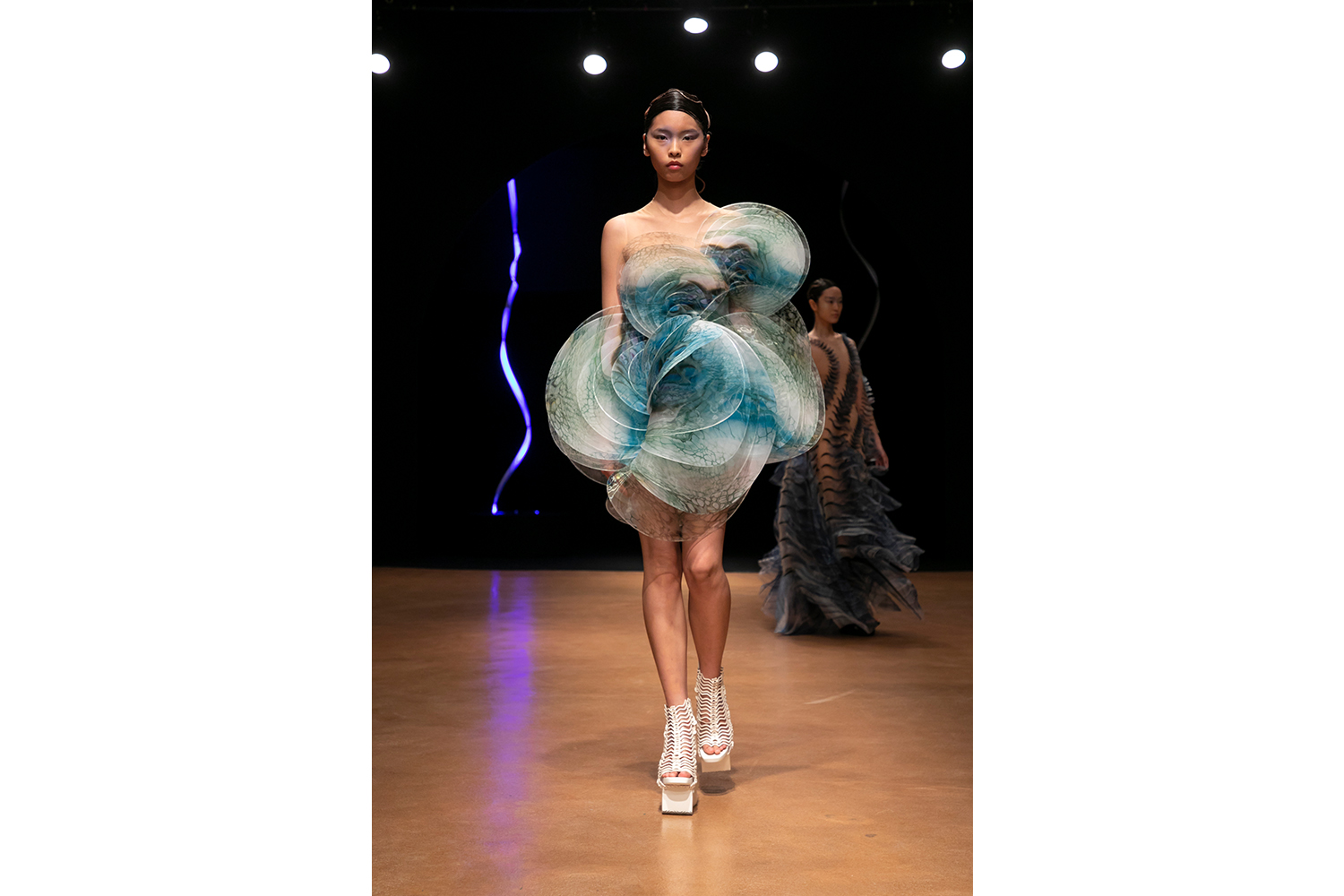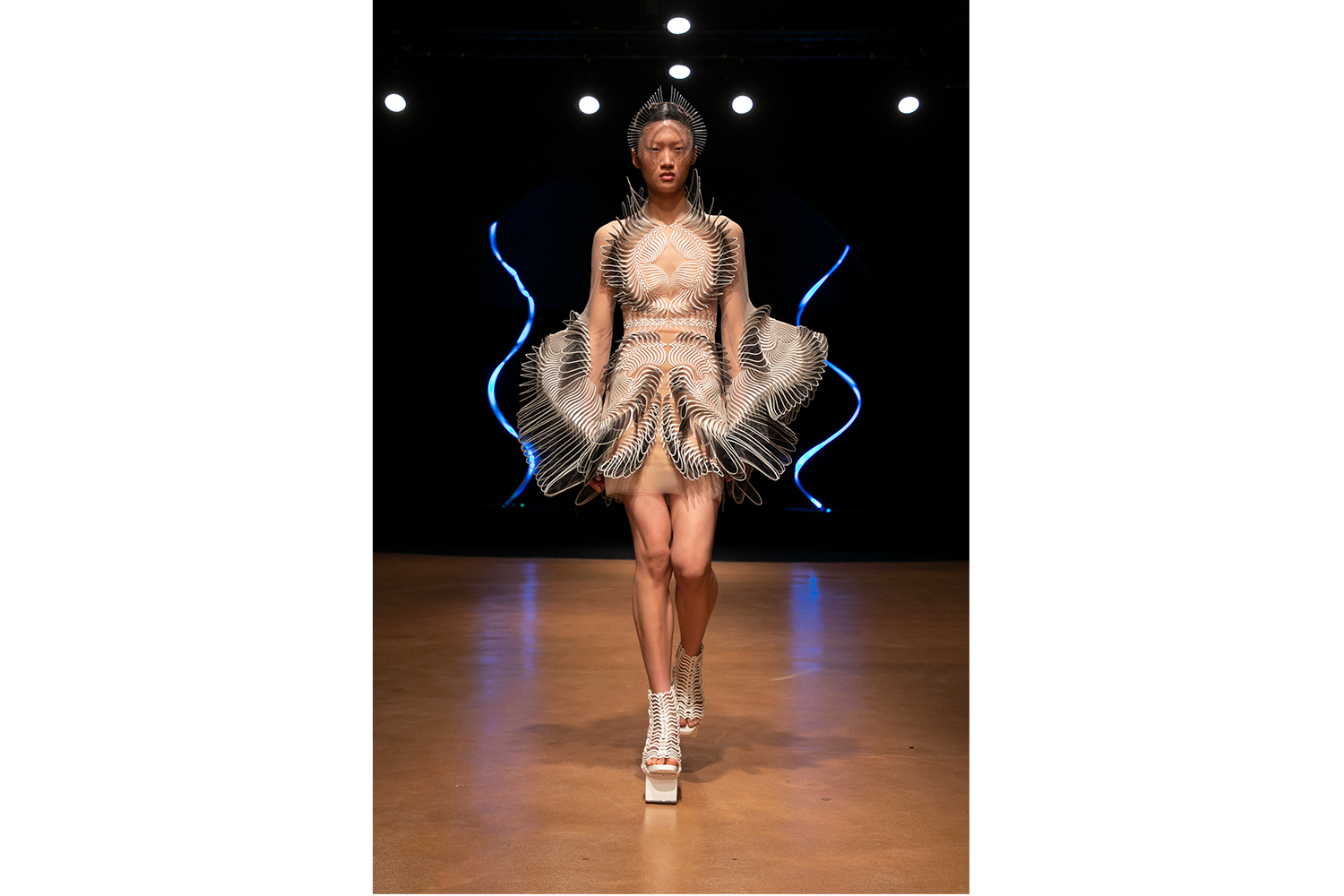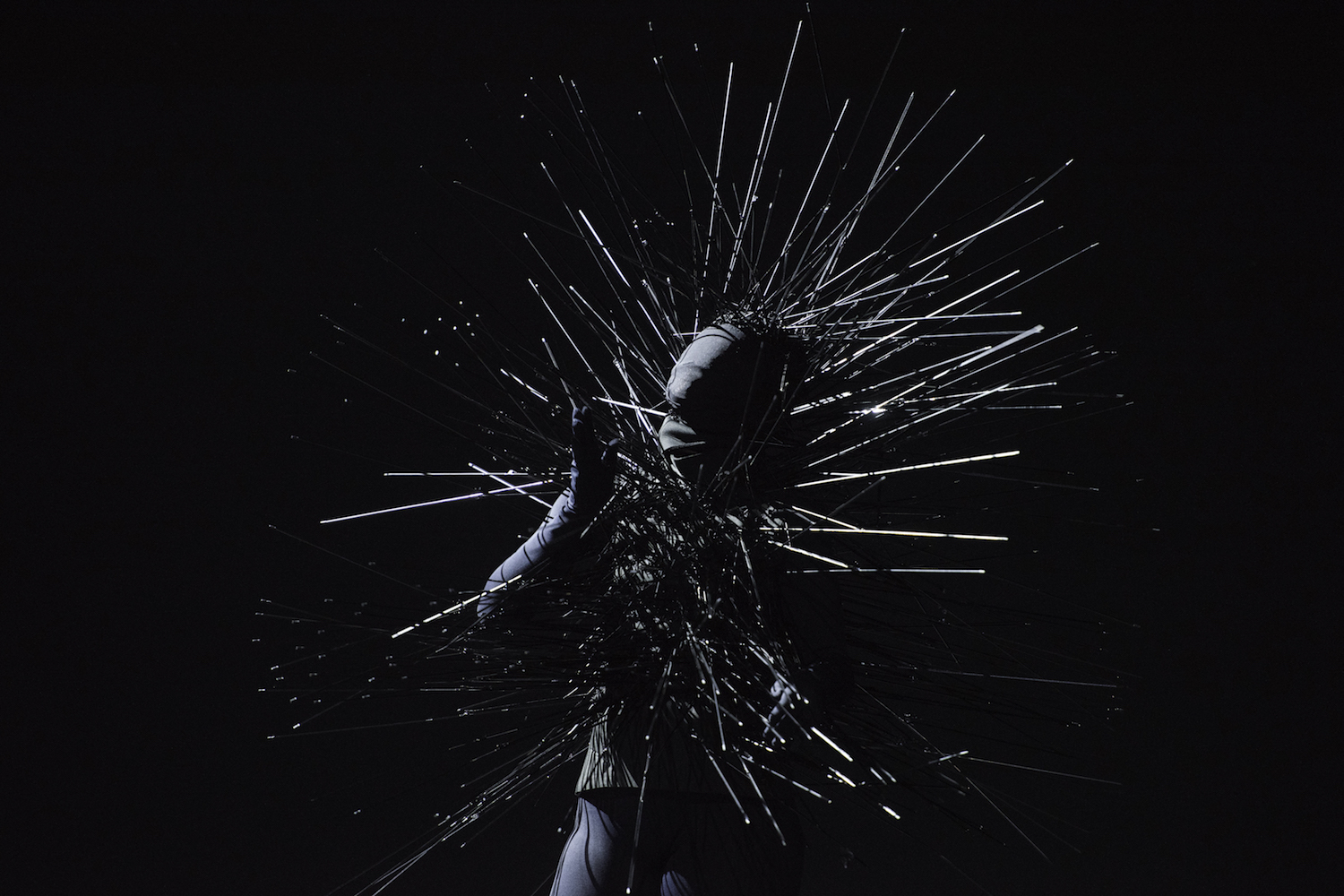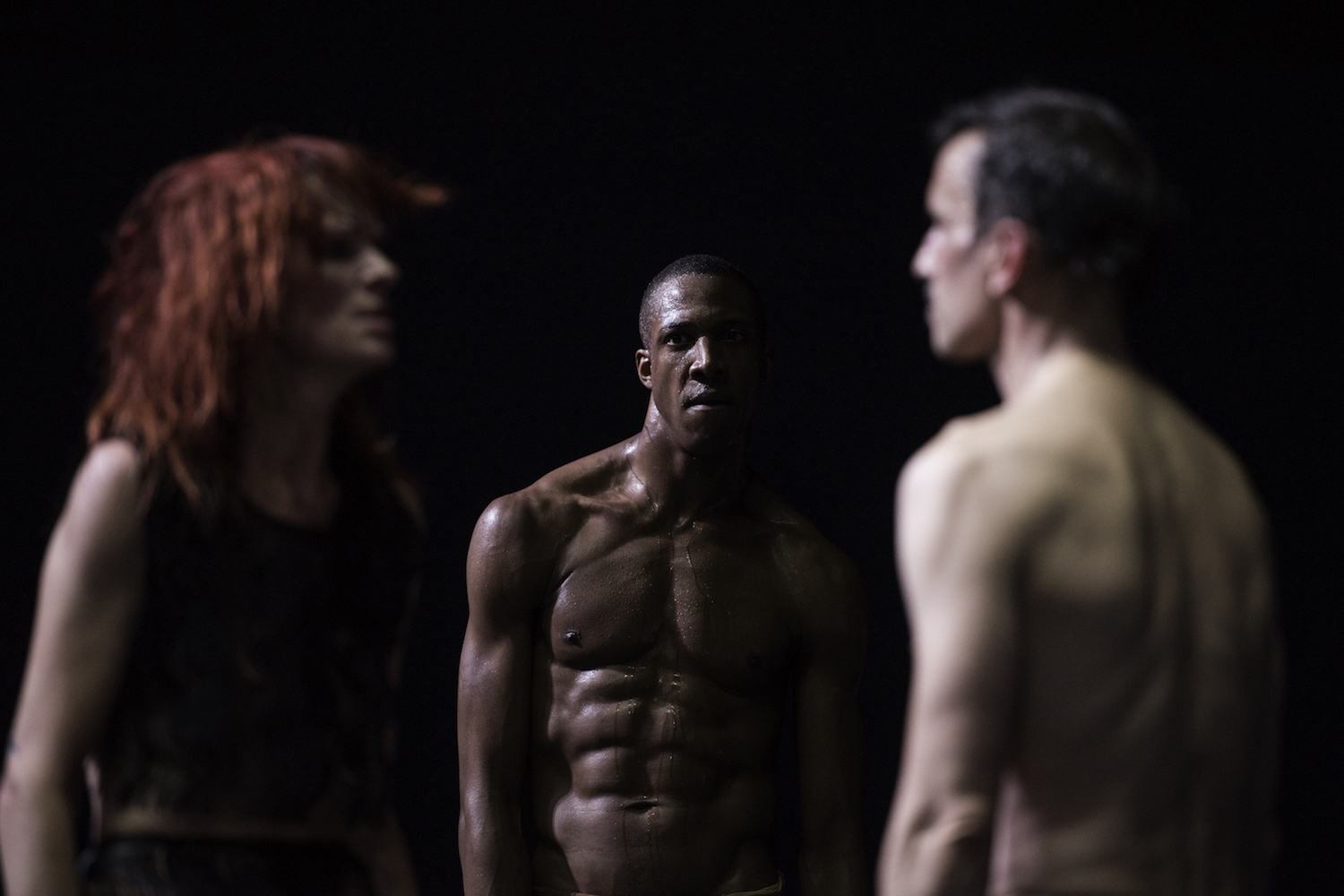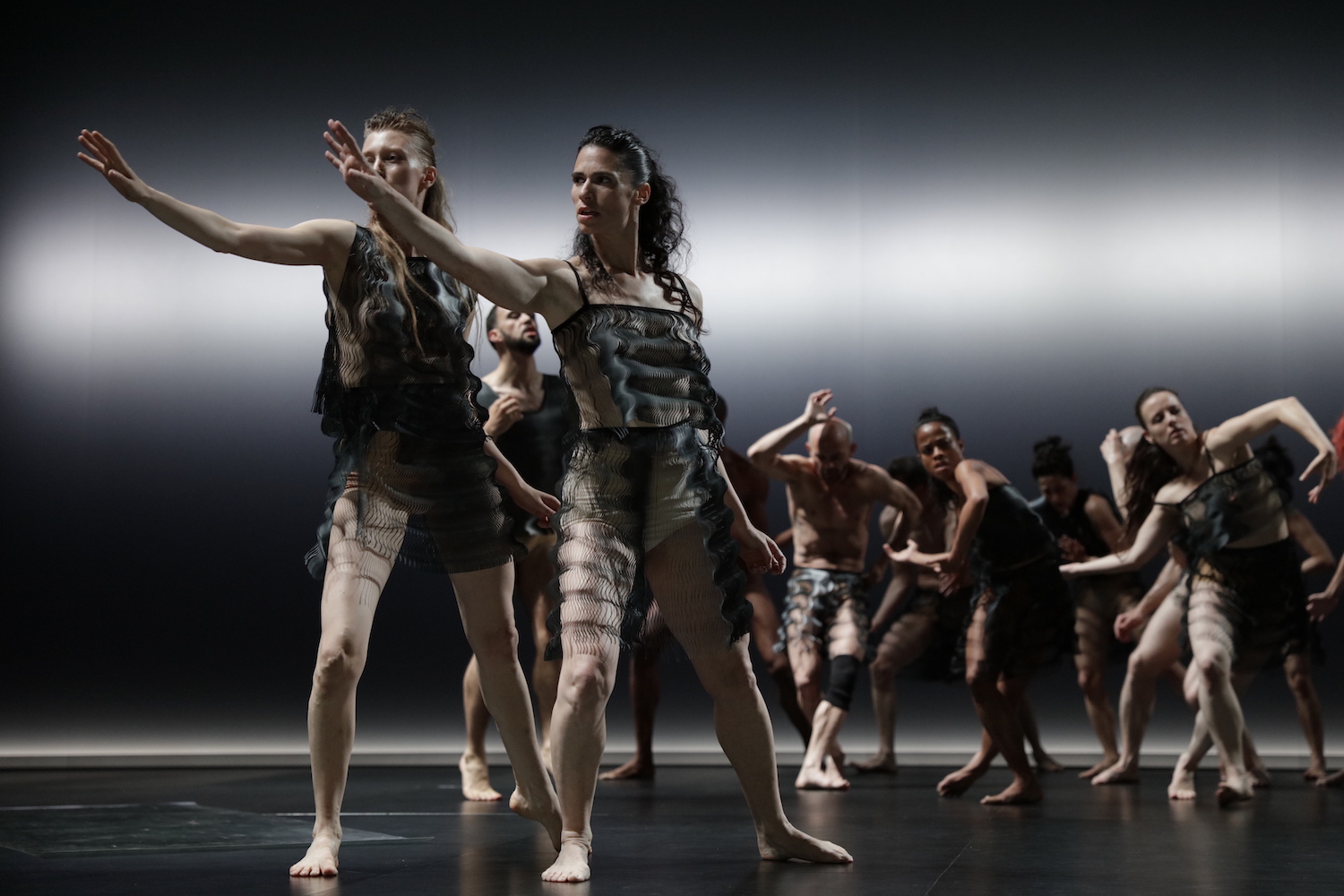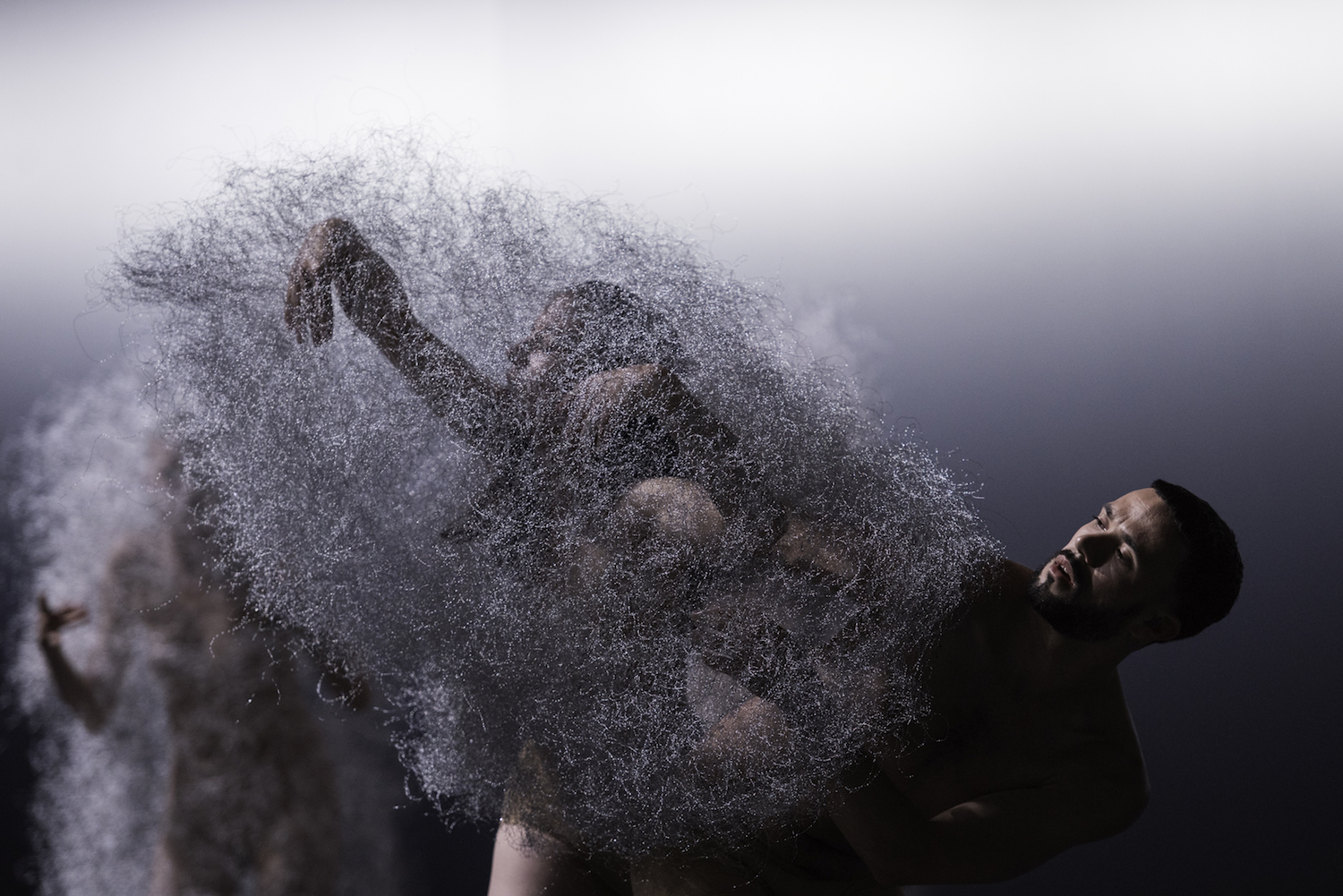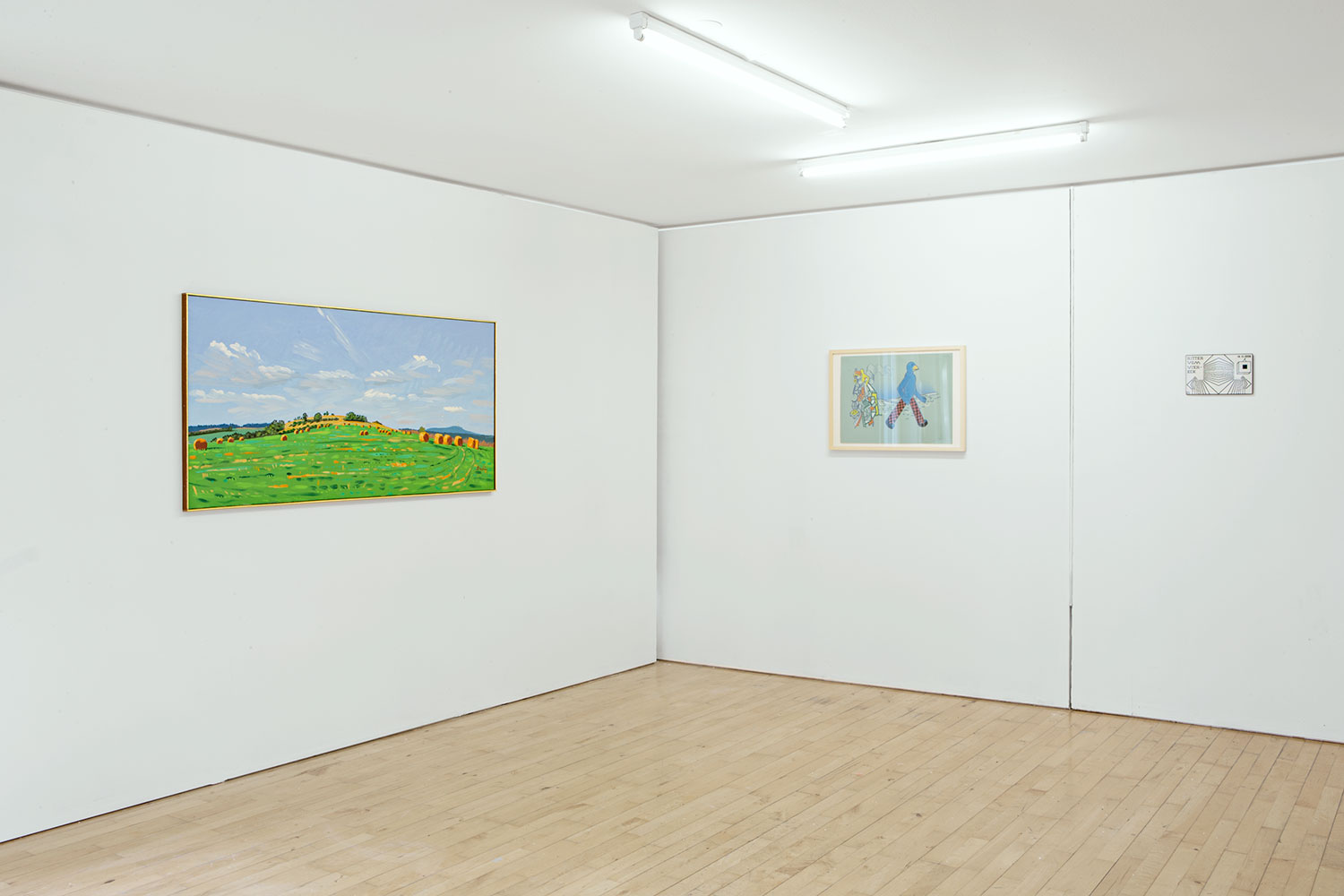Dance Office is a column dedicated to contemporary dance and performance art.
One year ago, I was an intern at an art and fashion magazine in Berlin. Having recently graduated in contemporary dance, and having little to no knowledge about fashion — aside from what I’d learned from watching The Devil Wears Prada — I was excited to use the role to learn as much as I could about an industry that had always intrigued me. Passing my days writing pieces about Copenhagen Fashion Week and fact-checking that the Balenciaga shoes in photo shoots were actually Balenciaga, my thoughts would often drift; I began to wonder how I could relate my new preoccupation with fashion to my interest in theater and performance.
At times, making connections between fashion and dance came naturally, especially in meetings discussing an upcoming feature concerning renowned Israeli choreographer Sharon Eyal’s choreography for Dior’s SS19 runway show. One day, while preparing a social media post of images from Dutch designer Iris van Herpen’s SS19 haute couture collection, I noticed parallels between the way her garments transform and augment the human body and the otherworldly costume designs of the prolific twentieth-century German painter, sculptor, designer, and choreographer Oskar Schlemmer. To this day, the connection still preoccupies me, and I can’t help but wonder (to quote great fashion writer Carrie Bradshaw): Was this comparison just the by product of a former dance student’s idle daydreams? Or is there something more to it? Could Iris van Herpen really be the Oskar Schlemmer of the twenty-first century?
Having originally studied applied graphic design in Stuttgart before working as a painter in Berlin, Oskar Schlemmer was a key figure in the Bauhaus movement of the early twentieth century, which sought to bring together principles of mass production with individual artistic vision. Although he was interested in and engaged with many areas of Bauhaus practice — he led a wide variety of Bauhaus workshops, teaching stone and wood sculpture, wall painting, and life drawing — Schlemmer is particularly remembered for his experiments in performance while heading the Bauhaus stage workshop in Weimar and Dessau between 1923 and 1929.
A key concept that Schlemmer explored was that of the kunst figur (art figure). “Schlemmer was working with the idea of abstraction, and creating a new type of being drawn from the general idea of man, but composed of geometrical forms and without individual human characteristics,” says Bettina Wagner-Bergelt, the current artistic director of Tanztheater Wuppertal Pina Bausch, who was also the curator of the Bauhaus centenary opening festival in 2019. This is evident in his seminal work Das Triadische Ballett (The Triadic Ballet) from 1922, most recently restaged by the Bayerisches Staatsballett. “What he was mainly interested in was movement and how it worked in the incredibly sculptural, heavy, and uncomfortable outfits he created out of all kinds of material — wood, cardboard, plastics, hoses, iron, and painted paper-mache,” Wagner-Bergelt continues. She is, of course, describing the futuristic, and now iconic, costumes of the Triadic Ballet, in which primary-colored materials clad and encircle the performers’ bodies in celestial orbits, their rigid nature restricting the dancers’ movements, making them stiff and mechanical in the process.
While designer van Herpen cannot be accused of designing stiff and mechanical garments — her designs for her recent Spring 2020 couture show at Paris Fashion Week were described by Vogue as having “fluttered, flowed, and reverberated in step with the models who, themselves, swished around the central stage like marine animals” — it cannot be denied that her experimental approach to the human form directly relates to Schlemmer’s concept of the kunst figur. Even though she is softer in her approach — tempering her use of mylar and copper with lightweight fabrics such as tulle and organza — one can see clearly in her spring 2020 show how she alters the outlines of her models’ bodies, shrouding them in circles of hypnotically patterned fabric. “I love that there’s this common thread running through her work: an interest in the silhouette of the human being and how it can be approached from different angles,” says Belgian contemporary dance choreographer Sidi Larbi Cherkaoui. He even mentions that her work somewhat reminds him of the practice of Antony Gormley, a British sculptor noted for his exploration of the human body. “There’re all these different approaches she has to the human body. She’s a bit of a choreographer in that way.”
Cherkaoui worked with van Herpen — as part of a creative team including performance artist Marina Abramović and French choreographer Damien Jalet — in 2018 on a restaging of the Debussy opera Pelléas and Mélisande. “We wanted to create something very futuristic. When we looked at the shapes and the forms of Iris’s work, we thought she would make something extraordinary,” he told Flash Art during a phone interview. And that she did, with costumes ranging from intricate 3-D-printed armor-like garments covering dancer’s heads and shoulders, leaving the rest of the body naked and free to move, to a dress from which long, silver, extending strips of fabric could be pulled out by other performers, creating a geometric web of intersecting lines across the entire stage. “It was as much a spider web as some sort of constellation, as if you were looking at the stars and connecting them with a pencil in your mind,” says Cherkaoui. Visually, the web of white lines can be compared to the costume for Schlemmer’s Stick Dance (1928), in which wooden sticks are affixed to the chest, arms, and legs of a performer. The sticks elongate the performer’s limbs, drawing attention to the mechanics of their joints and abstracting their movements.
Foraying into the world of dance is a frequent occurrence for van Herpen. In addition to her work on Pelléas and Mélisande, she has created costumes for productions by Berlin-based choreographer Sasha Waltz and for work created by Benjamin Millepied at the New York City Ballet. However, her interest in movement is not restricted to interdisciplinary collaborations. Her preoccupation with the body in motion, like Schlemmer’s, permeates her entire practice. “Dance, like fashion, is such a personal expression — it’s literally a transformation of the body. That’s something you can see in my work a lot. I’m not only working two dimensionally with the body, but also looking at the space around it, like a dancer would,” van Herpen told Charmaine Li as part of a lengthy interview for issue 47 of the Berlin-based magazine Mono.kultur. “For me, the pieces aren’t complete if they’re not moving. The garments come to life when they are worn,” she continues. This statement is also true of Schlemmer’s costumes, for while it was interesting to see recreations of them exhibited at the Akademie der Kunst in Berlin for the Bauhaus opening festival last year, their true purpose and significance only came to light when donned and danced in by performers.
Not only are van Herpen and Schlemmer comparable in their dedication to exploring movement, choreography, and experimenting with the presentation of the human form, they are also similar in their embrace of science and technology. Just as Schlemmer worked alongside Bauhaus architect Walter Gropius and technology-preoccupied artist László Moholy-Nagy — famed for creating one of the earliest electrically powered kinetic sculptures — Van Herpen has collaborated with a variety of biologists and architects to make her collections possible. In doing so, she has stretched the limits of what sartorial design can be, finding inspiration in scientific discoveries and combining technologically innovative techniques — such as 3-D printing, injection molding, and laser cutting — with traditional crafts. For example, her 2015 Magnetic Motion collection was created after a visit to CERN to see the world’s biggest particle accelerator. “I can’t see scientists separately from any creative mind,” said van Herpen, again to Charmaine Li for mono.kultur. “They need the same open-mindedness to be able to find new solutions and new paths in an area that is so fundamental to our lives.” This multidisciplinary approach is not just analogous to Schlemmer’s working ethos, but also to the entire spirit of the Bauhaus movement. “Let us create a new guild of craftsmen, without the class distinctions which raise an arrogant barrier between craftsmen and artist,” said Walter Gropius in the Bauhaus manifesto. “Together let us conceive and create the new building of the future, which will embrace architecture and sculpture and painting in one unity.”
While van Herpen’s collections use technology to make them possible, the work is, thematically, more concerned with nature. “Even though everything is very mathematical, precise, and futuristic, there is an organicity to her designs. Sometimes they look like insects, sometimes they look like butterflies,” says Cherkaoui. “Her work is always connected to nature even though it’s really high tech. I think that is what makes it so easy to connect it with choreography.” In contrast, Schlemmer’s work appears much more preoccupied with the inhuman, inorganic, and the mechanical. “Schlemmer examined the relationship and possibilities of substituting the human performer with machines and objects,” says Wagner-Bergelt. “He thought that the century of real people on stage as performers might be over.”
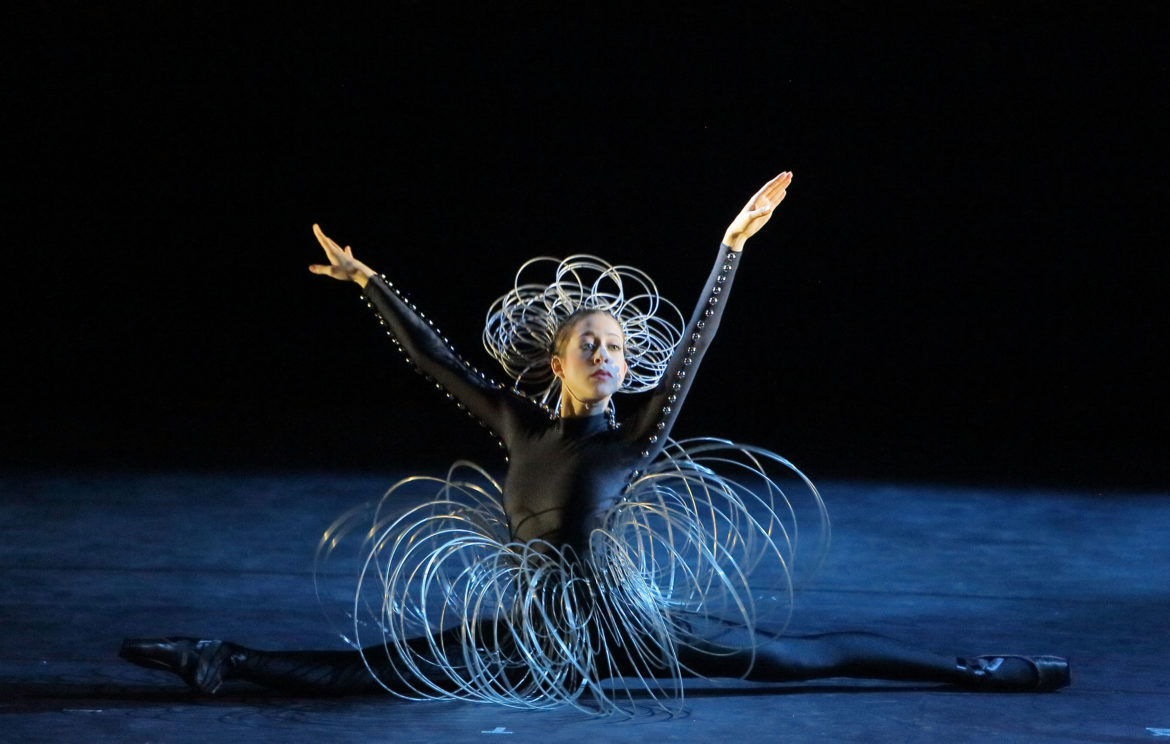
This difference in thematic preoccupation is, for me, the main sticking point in my comparison, and makes me conclude that while van Herpen’s work may carry forward certain elements of Schlemmer’s work and the Bauhaus spirit of experimentation, she cannot be categorized in such certain terms as “the Oscar Schlemmer of the twenty-first century.” But then again, I can’t help but wonder (to quote Carrie Bradshaw for a second time), was this really my question all along? Or was delving into this topic more to prove that dance and fashion are natural bedfellows that can be considered in conjunction with each other? With increasing numbers of fashion designers incorporating choreography into their shows — from Marc Jacob’s recent collaboration with American “punk ballerina” Karole Armitage at New York Fashion Week to Marni’s Edgar Allen Poe–inspired show at Milan Fashion week choreographed by Michele Rizzo — and visa versa, it seems like the time is coming for more synthesized analyses of the two art forms and the artists that traverse them.

